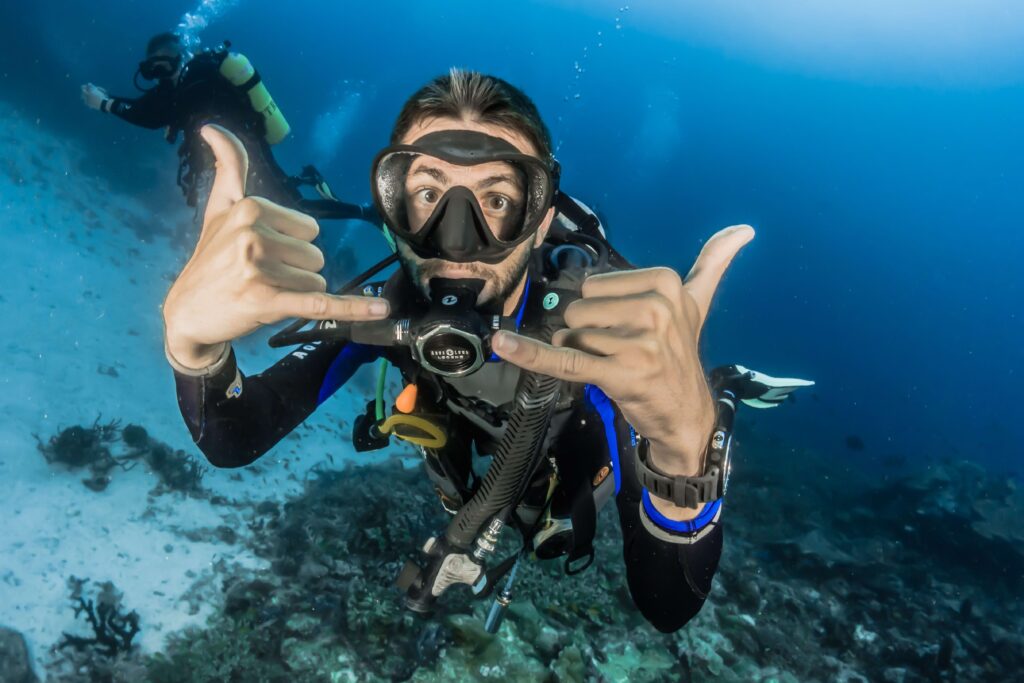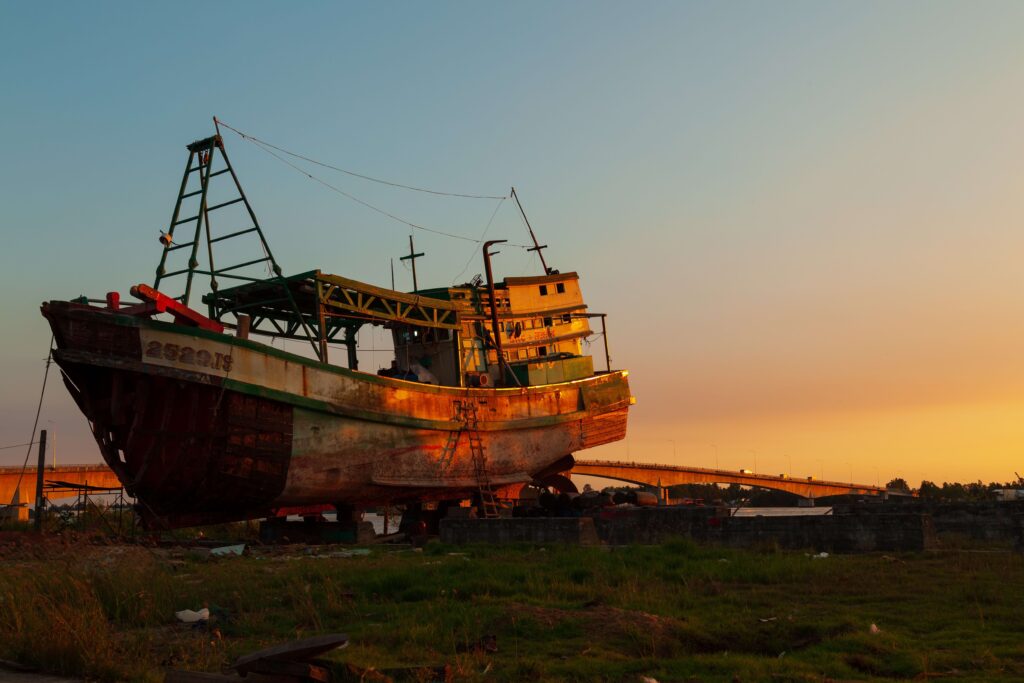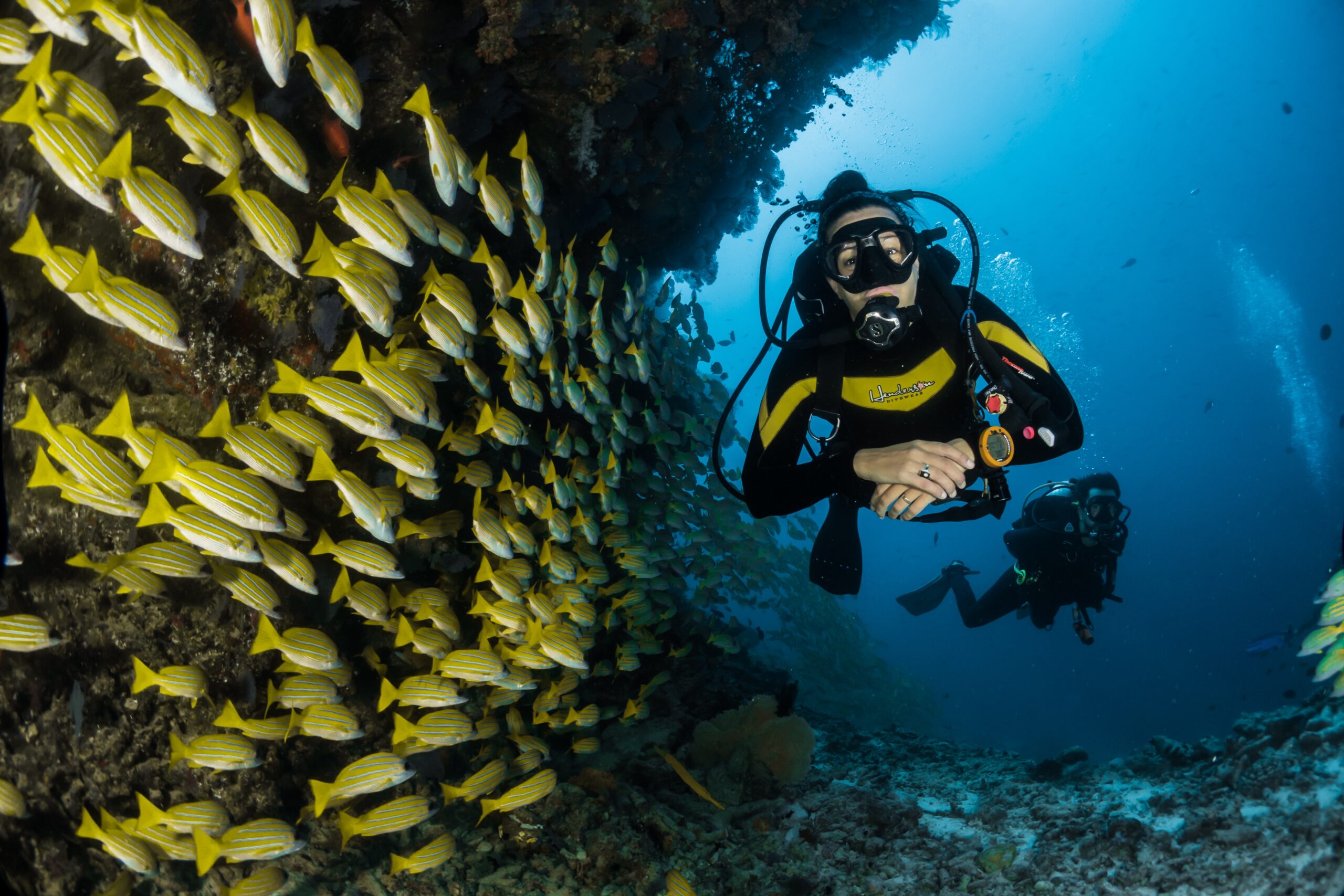Clear waters, vibrant marine life, and warm conditions – is it the Great Barrier Reef? No, we’re actually talking about the St Lawrence River.
Scuba divers flock to this river every year to see the underwater mountains, marine life, and the 200 shipwrecks dotted around the 1000 Island region.
But river diving isn’t for the faint of heart, especially one with such intense currents.
If you’re thinking about a St Lawrence River diving trip, here’s everything you need to get prepared.
Scuba Diving in the St Lawrence River

The St Lawrence River is the perfect scuba diving trip for anyone interested in history. In the freshwater, you won’t come across tropical fish or coral reefs, but you’ll get to explore dozens of shipwrecks dating back to the early 1800s and some incredible underwater geography.
The Famous St Lawrence River Shipwrecks

For years, the Saint Lawrence River was a shipping route between the Great Lakes and the Atlantic Ocean. Everything from wooden schooners to warships traveled these waters, and over 200 vessels now lay at the bottom of the river.
Most of the wrecks can be found in the thousand island region, where over 1800 islands made for treacherous waters at the Canada–US border. If you’re a certified wreck diver, here are a few of the wrecks you can visit.
Eastcliffe Hall Collapse
This steel freighter met her match while carrying a load of “pig iron” on July 14 1970. Only 12 people survived, and the wreck now sits just south of Crysler Marina in Ontario.
Conestoga Collapse
Launched in 1878, this 2,000-ton ship sank on May 22, 1922, just west of Cardinal, Ontario. It’s a popular wreck for night diving and sits about 30 feet below the surface.
Fleur Marie Collapse
This Brigantine was built in 1850 but deteriorated while sitting in a dock in Prescott. After a fire on board, it sank in the mid-channel and now sits right at the bottom, 52 feet down. It’s surrounded by a harsh current, so only experienced divers can visit, just south of the windmill – a site found west of buoy 131B.
America Collapse
After a catastrophic explosion, this oil barge sank on June 20, 1932. At a depth of 75 feet, it now rests upside down in the shipping channel from Jordstat Castle to Dark Island. It’s an incredible site to visit if not a little disorientating.
Loblaw’s Wreck Collapse
Just off Ogdensburg’s waterfront, about 52 feet down, you’ll find Loblaw’s wreck. This vessel is about 130 feet long, and some of the deck and wooden hull can still be seen. You’ll need to take a noticeable current to visit this wreck, but it’s another interesting one to see.
Where and When to Dive in the St Lawrence River

Although the water is warmest during the summer and early fall, it’s actually possible to dive the Saint Lawrence River year-round. The waters are exceptionally clear, and both the American and Canadian sites are well-equipped to assist divers.
The 1000 Islands region is where all the action is and where you’ll find most of the shipwrecks. For anyone in your party that’s not an experienced diver, there are also opportunities to snorkel or take a trip on a glass-bottomed boat.
What Are The Conditions Like?
The water temperature varies throughout the year, but it’s most pleasant in the summer (usually ranging from 68 to 75F). There’s also no thermocline in the area, so you won’t get any sharp drops in temperature in the deep waters.
Most people want to experience St Lawrence River diving for excellent underwater visibility. Rivers are known for low visibility, but St Lawrence is known for its beautiful waters.
Much of this is owed to the zebra mussels. Although they’re an invasive species in the St Lawrence River, they help clean up the river and keep the water clear. When you visit in the summer and early fall, you can expect visibility up to 100 feet.
Current Warning
Although the conditions are great and the water is usually fairly warm, don’t let the conditions fool you. The currents in the St Lawrence River can be significant, so dives are only suitable for divemasters and those with intermediate to advanced diving skills.
There are certain shallow spots that are great for novice divers and even non-swimmers looking to snorkel, but you most likely won’t be able to see the shipwrecks.
What to Expect: Underwater Landscape and Wildlife
Just below the quiet surface of the St Lawrence River is a varied landscape steeped in history. With over 200 shipwrecks and 80 species of fish, there’s a lot to see.
Among the billion-year-old underwater mountains (dating back to the ice age), you’ll see interesting plants, fish, and plummeting rock walls blanketed in anemones. On some of the gentler slopes, you’ll find catfish, rainbow trout, and even largemouth bass.
If you’re very lucky, you might even come across an otter, beaver, muskrat, or an endangered Blanding’s turtle.
Tips for a Successful Dive at St Lawrence River
If you’ve never been river diving before, it comes with a unique set of challenges. Here are some tips to help you get prepared for St Lawrence River diving.
Take a Course
St Lawrence is suited to experienced divers with specialty knowledge. If you’re feeling anxious, start by taking a course or some training to brush up on your skills.
PADI offers a drift diving course that shows you how to navigate strong currents. You’ll learn all about buoyancy control, navigation, and surface signaling to help you stay safe out in the river.
Other dive schools have similar courses, so shop around to see what’s available near you.
Get in Shape
River diving can be much more physically demanding than ocean diving. You need to be in good shape to handle strong currents, not to mention upper body strength to pull yourself along the riverbed.
You tend to get through oxygen faster because of the fatigue you feel working against currents, so cardiovascular health is essential.
Practice Your Technique
When working with intense currents on the bottom of a river, keep your legs spread apart and move like a spider. Drag your fins along the bottom to stay low, and make sure they don’t have any large openings that could snag on debris.
If you feel your legs raised higher than your back, you’re at risk of losing control and tumbling, so kick strongly until you are back parallel to the riverbed.
Use a Line and a Float
One of the most important pieces of scuba diving gear when river diving is your line and float. You should be connected to your diving buddy as well as a float that follows you along the surface.
A line and float help ensure you don’t get separated in the strong currents and will help you navigate back up to the surface if you get disoriented.
Will You Take on the St Lawrence River?
If you’re used to tropical fish and coral reefs, St Lawrence River diving will be a drastic change of pace. But it’s a great experience for any skilled diver.
The shipwrecks are well-preserved and challenging to visit, while the marine life is vibrant and easy to observe in clear conditions.
Just make sure you’re prepared to take on the strong currents and take some extra training if you’re feeling anxious.

